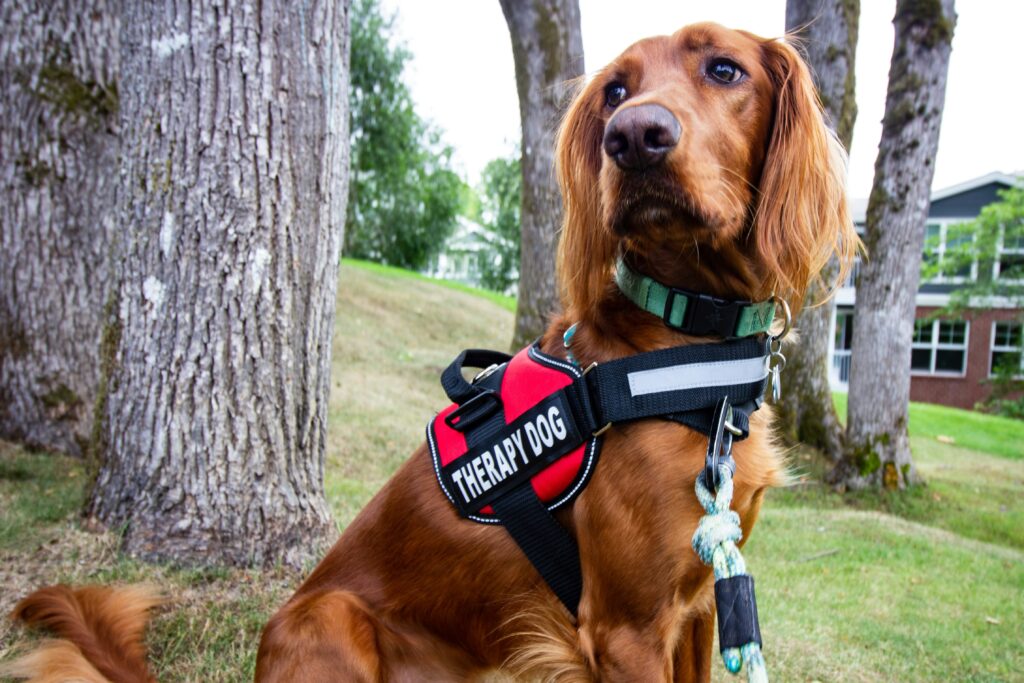Dogs have long been known as “man’s best friend,” a title earned through centuries of companionship, loyalty, and unwavering love. This deep bond between humans and dogs has evolved into more than just a pet-owner relationship; it has paved the way for dogs to become vital partners in therapy and healing. The unique qualities that make dogs excellent therapy animals stem from their keen senses, loving personalities, and their ability to connect with people on a profound emotional level.
The use of dogs in therapeutic settings, known as animal-assisted therapy (AAT), leverages their natural tendencies to provide comfort, reduce stress, and improve overall well-being. One of the primary reasons dogs are effective therapy animals is their acute sensory capabilities, especially their sense of smell. Dogs possess up to 300 million olfactory receptors in their noses, compared to about six million in humans. This incredible sense of smell allows them to detect changes in human physiology, such as fluctuations in hormone levels, which can signal stress or illness. This ability is particularly valuable in detecting and alerting to conditions like seizures, low blood sugar, and even certain types of cancers, making dogs indispensable in both medical and therapeutic contexts.

Additionally, the loving and non-judgmental nature of dogs plays a crucial role in their effectiveness as therapy animals. Their inherent ability to provide unconditional love and companionship helps reduce anxiety, depression, and feelings of loneliness. This bond between humans and dogs releases oxytocin, a hormone associated with bonding and stress relief, in both the dog and the human. Studies have shown that interaction with therapy dogs can lower blood pressure, reduce cortisol levels, and increase levels of serotonin and dopamine, all of which contribute to a sense of well-being.
Historically, the concept of using animals for therapy can be traced back to the late 18th century. The first documented case was in England at the York Retreat, where William Tuke used small animals, including dogs, to help patients with mental health issues. However, it wasn’t until the 20th century that the formal use of therapy dogs gained recognition. In the 1960s, child psychologist Boris Levinson discovered that his dog, Jingles, helped facilitate communication with his young patients, leading to the term “pet therapy.” Since then, the field has grown significantly, with numerous studies validating the positive impact of therapy dogs on physical and mental health.

Today, therapy dogs are used in various settings to assist a diverse group of individuals. In hospitals, they visit patients to provide comfort and a sense of normalcy. In schools, they help children with learning disabilities or social challenges. In disaster response, therapy dogs offer solace to survivors and rescue workers. Their ability to adapt to different environments and needs makes them invaluable in therapeutic roles.
In conclusion, the unique blend of sensory abilities, loving nature, and historical significance of dogs has solidified their role as essential therapy animals. Their contributions to human health and well-being are immeasurable, making them true partners in healing and a testament to why dogs are indeed man’s best friend. The integration of dogs into therapeutic practices continues to expand, promising a future where their presence will enhance even more lives.
Love Life x
References:
- Fine, A. H. (Ed.). (2010). Handbook on Animal-Assisted Therapy: Theoretical Foundations and Guidelines for Practice. Academic Press.
- Hart, L. A. (2000). Psychosocial benefits of animal companionship. In A. Fine (Ed.), Handbook on Animal-Assisted Therapy (pp. 59-78). Academic Press.
- Horowitz, A. (2016). Being a Dog: Following the Dog Into a World of Smell. Scribner.
- Beetz, A., Uvnäs-Moberg, K., Julius, H., & Kotrschal, K. (2012). Psychosocial and Psychophysiological Effects of Human-Animal Interactions: The Possible Role of Oxytocin. Frontiers in Psychology, 3, 234.
- Barker, S. B., & Dawson, K. S. (1998). The Effects of Animal-Assisted Therapy on Anxiety Ratings of Hospitalized Psychiatric Patients. Psychiatric Services, 49(6), 797-801.
- Marcus, D. A. (2013). The Science Behind Animal-Assisted Therapy. Current Pain and Headache Reports, 17(4), 322.
- Wells, D. L. (2009). The Effects of Animals on Human Health and Well-Being. Journal of Social Issues, 65(3), 523-543.

